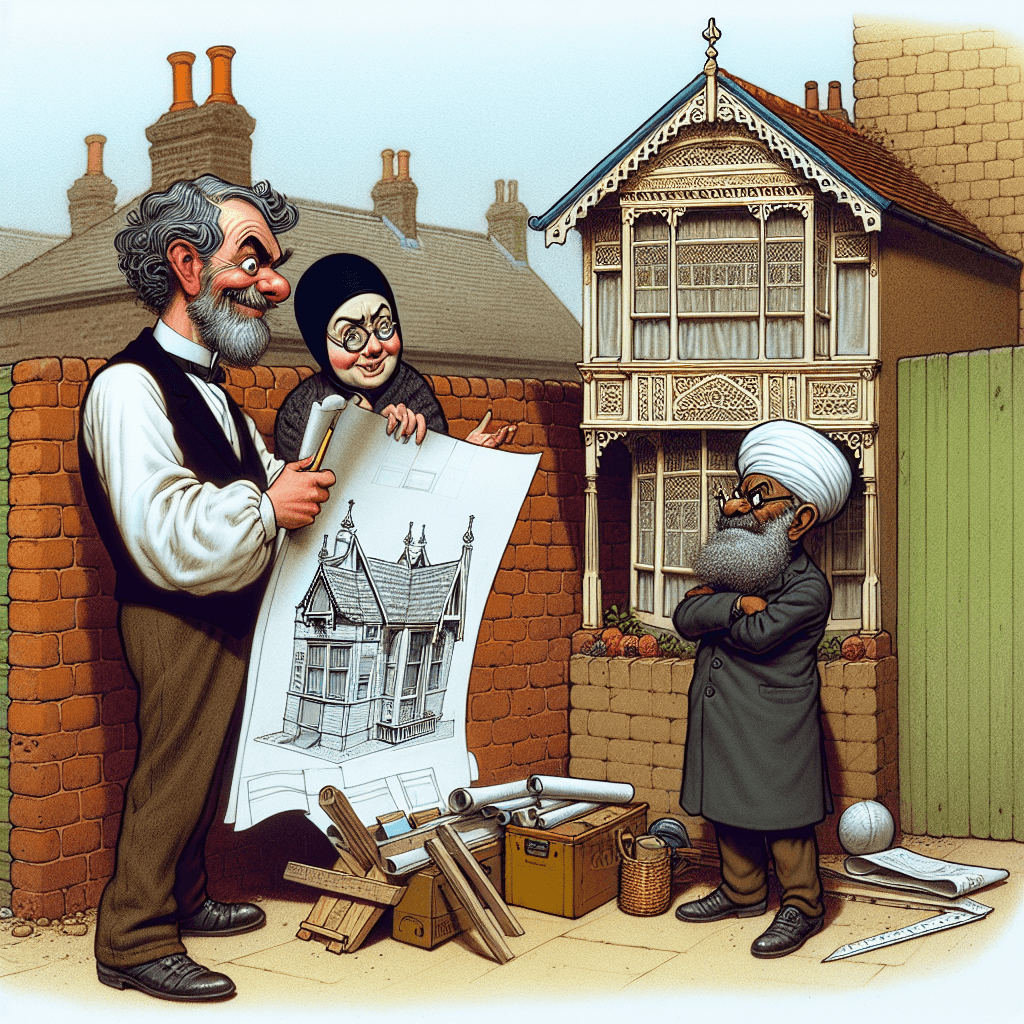Why did people once build entire houses just to spite their neighbors
Forget building a fence—discover the outrageous and true stories of people who took their grudges to the next level, using bricks and mortar to have the last laugh.


Too Long; Didn't Read
TLDR: People built spite houses out of revenge. Usually stemming from property disputes or family feuds, these bizarrely shaped buildings were constructed on tiny, awkward lots specifically to block a neighbor's sunlight, ruin their view, or just be a massive, inconvenient eyesore.
The Ultimate Grudge: Why Did People Once Build Entire Houses Just to Spite Their Neighbors?
Have you ever had a disagreement with a neighbor? Maybe it was over a barking dog, a poorly placed fence, or loud music. Now, imagine taking that frustration and channeling it not into a terse conversation, but into constructing an entire house purely to annoy them. Welcome to the world of "spite houses," architectural monuments born from feuds, frustration, and the unyielding desire to have the last word. These peculiar structures, often bizarrely shaped and defiantly placed, stand as physical testaments to human conflict. This post explores the fascinating history behind spite houses, uncovering the motivations that drove people to engage in such an extreme form of protest.
What Makes a House a Spite House?
A spite house is a building constructed or modified for the primary purpose of irritating a neighbor or another party with an interest in the land. While they are technically dwellings, their design prioritizes antagonism over comfort. Common characteristics include:
- Unusual Dimensions: Many are exceptionally narrow, sometimes only a few feet wide, built on tiny, leftover parcels of land.
- Obstructive Placement: They are frequently designed to block a neighbor's scenic view or access to sunlight and air.
- Purely Symbolic: Some are barely habitable, existing almost solely to make a point or devalue an adjacent property.
These structures are often the result of disputes that legal channels couldn't, or wouldn't, resolve, pushing individuals to take matters into their own hands in the most permanent way imaginable.
Motivations Behind the Malice
The reasons for building a spite house are as varied as the designs themselves, but they typically fall into a few key categories. The primary driver was often a lack of modern zoning regulations. In the 19th and early 20th centuries, if you owned a piece of land, you could generally build whatever you wanted on it, providing a perfect opportunity for architectural revenge.
Blocking a View or Sunlight
One of the most common catalysts was a dispute over a view, often referred to as "viewpiting." A person might build a tall, thin structure right up against their neighbor’s property line with the express purpose of plunging their home into shadow or replacing a beautiful landscape with a blank brick wall. This was a direct and daily reminder of the builder's discontent.
Inheritance and Land Disputes
Family feuds, particularly over inheritance, were another powerful motivator. A famous example is Boston's "Skinny House." According to local legend, two brothers inherited a plot of land after their father's death. While one brother was away serving in the Civil War, the other built a large home on the best part of the land, leaving only a tiny, seemingly useless strip for his sibling. Upon his return, the soldier brother built a 10-foot-wide house on the sliver of land, effectively blocking the sunlight and ruining the view from his greedy brother's new home.
Protesting Authority
Not all spite is directed at neighbors. Sometimes, the target is the government or a powerful developer. When a homeowner feels the compensation offered for their property under eminent domain is unfair, they might refuse to sell. This can lead to the creation of a "nail house," where the structure remains defiantly in place while roads, plazas, or new buildings are constructed around it.
Conclusion
Spite houses are more than just architectural oddities; they are a fascinating chapter in social history. They represent a tangible form of conflict resolution from an era with fewer rules, where grudges could be immortalized in wood and brick. These structures tell stories of family drama, personal slights, and battles against burgeoning cities. While modern zoning laws have made the construction of new spite houses nearly impossible, the existing ones serve as powerful reminders of the incredible—and sometimes petty—lengths people will go to when pushed to their limits. They prove that sometimes, a person's home is not just their castle, but their weapon.


